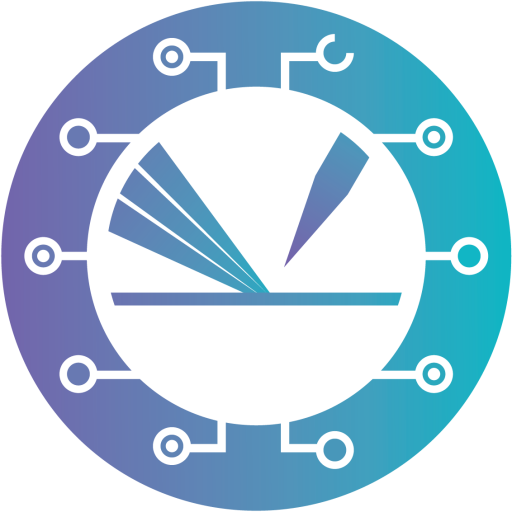Andreas Erbe
Department of Materials Science and Engineering
NTNU, Trondheim, Norway
Friday, 19th January 2024, 14:00 s.t. (new time!)
The talk will be given in hybrid mode.
You can either attend in physical presence:
TU Wien, Institute of Applied Physics,
Wiedner Hauptstraße 8-10, 1040 Vienna
Yellow Tower “B”, Seminar Room DB 05 B (5th floor)
Or you join via Zoom:
Zoom-Meeting
Meeting ID: 645 9891 0567 Password: 7MYUY9ME

Preparation of Model-Catalysts for Fundamental Studies in UHV
Interfacial solvation plays an important role in electrochemical processes. According to the Marcus theory, solvation is determining the barrier of electron transfer. In some of the most important electrochemical reactions, such as hydrogen evolution, oxygen reduction and oxygen evolution, water is both reaction partner and solvent. In all reactions involving ion transfer, solvation of the ions is an important part of the mechanism. Vibrational spectroscopy methods are often methods of choice to study solvation. The interpretation of the experimental results relies on a thorough understanding, amongst others, of the spectra of the bulk systems. Combination with computational methods aids both the interpretation of experimental data and a validation of the computations.
This presentation will give a brief overview over the state of the interpretation of the vibrational spectrum of bulk water. While this spectrum is known for about a century, especially the interpretation of its OH stretching modes seems still controversial. Experimentally, the OH stretching mode region is represented by a rather broad continuum. H2O has 3 normal modes, however, hydrogen bonding influences the OH stretching modes and thus, interpretations exist in which the different spectral components are assigned to species with different degrees of H-bonding. Over the last decade, more and more evidence has emerged of the delocalisation of modes and presence of collective modes.
Examples from our own work will be used to illustrate the role of water in different interfacial processes. Underpaint corrosion presents a scenario in which a reaction volume with nanoconfinement opens at a metal/polymer interface. Electrochemical processes drive delamination, at the same time consuming solvent and producing dissolution products. The limited access of water can lead to unusual patterns of degradation involving chemical oscillations, and to unusual reaction intermediates such as aluminium hydrides.
A model system to study electrode potential dependent solvation is the interface between germanium and aqueous electrolytes. Ge shows a reversible potential dependent surface transformation from a hydrophilic OH-terminated surface to a hydrophobic H-terminated surface. Vibrational spectra show the increase in free OH and decrease in strongly hydrogen bound water near a hydrophobic surface, and the formation of a “hydrophobic gap” of ca. 2 Å.
A final system illustrating technological relevance in a possibly unexpected context are inclusions and surface water in high purity quartz. Vibrational spectra can be used to track the evolution of hydroxyl groups and water, revealing a complex chemistry in an apparently simple system.
References
A. Erbe, S. Nayak: Understanding water on surfaces, electrodes, and in bulk by vibrational spectroscopies. In: Encyclopedia of Solid-Liquid Interfaces, vol. 2, Elsevier, 2024, pp. 150-172, DOI: 10.1016/B978-0-323-85669-0.00035-0.
B.A. Gaweł et al.: In situ high temperature spectroscopic study of liquid inclusions and hydroxyl groups in high purity natural quartz. Min. Eng., 174, 107238 (2021), DOI: 10.1016/j.mineng.2021.107238.
B.A. Gaweł et al.: Structural evolution of water and hydroxyl groups during thermal, mechanical and chemical treatment of high purity natural quartz. RSC Advances, 10, 29018-29030 (2020), DOI: 10.1039/d0ra05798c.
D. Iqbal et al.: Solvent-starved conditions in confinement cause chemical oscillations excited by passage of a cathodic delamination front, Chem. Commun, 51, 16041-16044 (2015), DOI: 10.1039/C5CC06468F.
E. Mysliu, O. Lunder, A. Erbe: Role of aluminium hydrides in localised corrosion of aluminium revealed by operando Raman spectroscopy. Phys. Chem. Chem. Phys., 25, 11845-11857 (2023), DOI: 10.1039/D3CP00522D.
F. Niu et al.: Vibrational spectroscopic study of pH dependent solvation at an Ge(100)-water interface during an electrode potential triggered surface termination transition. J. Chem. Phys., 148, 222824 (2018), DOI: 10.1063/1.5018796.
F. Niu et al.: Electrode potential dependent desolvation and resolvation of germanium(100) in contact with aqueous perchlorate electrolytes. Phys. Chem. Chem. Phys., 19, 13585-13595 (2017), DOI: 10.1039/C6CP08908A.
